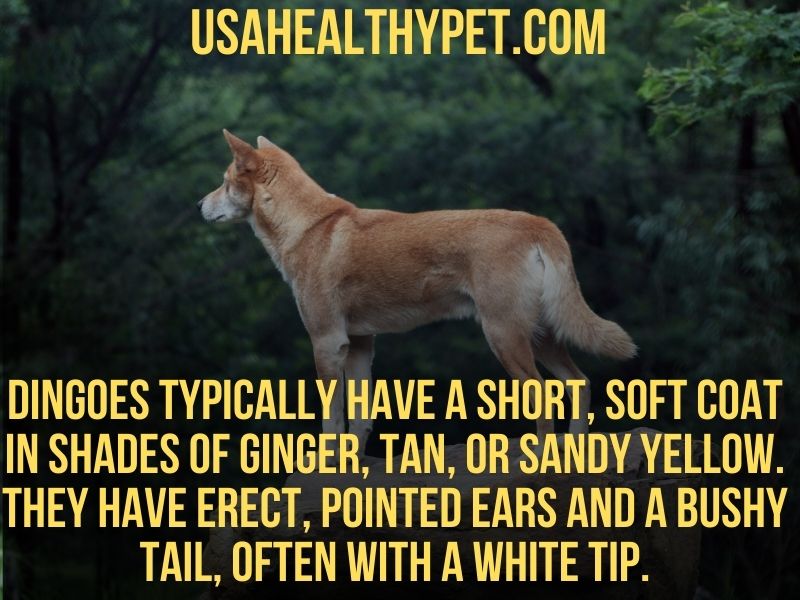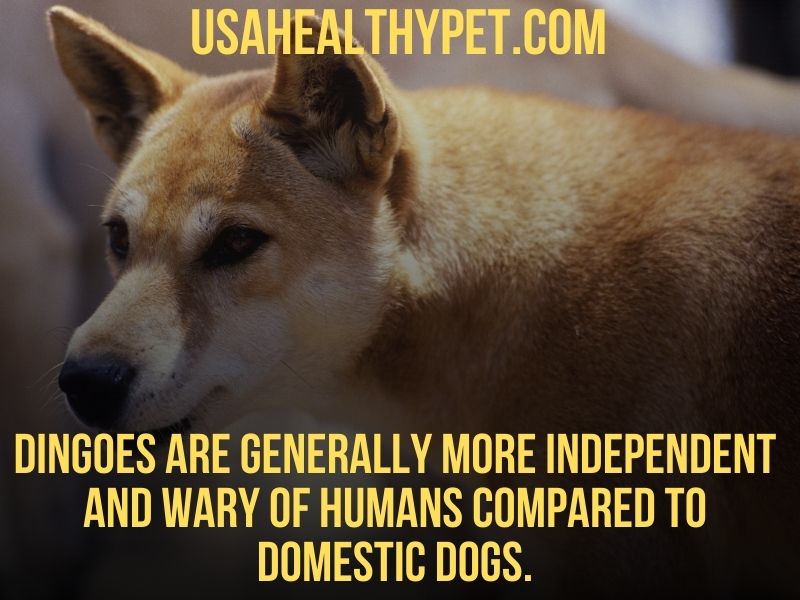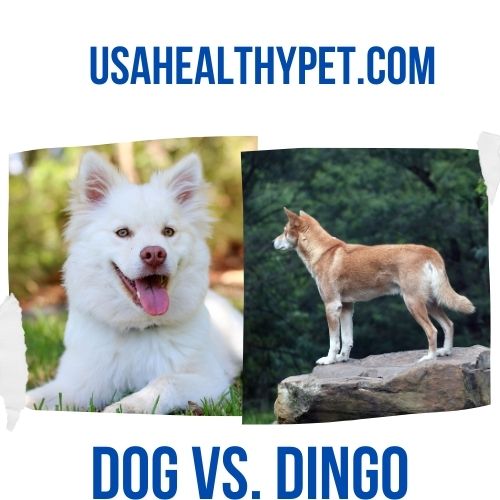Introduction
Have you ever wondered if your dog might be part dingo? It’s a question that intrigues many dog owners, especially those living in regions where dingoes are native.
Understanding the differences between dogs and dingoes is essential for appreciating their unique qualities and ensuring the best care for your pet.
- Introduction
- The Origins of Dogs and Dingoes
- Comparison Table: Dog vs. Dingo
- How to Know if Your Dog is a Dingo
- Dog Breeds That Look Like a Dingo
- Physical Characteristics
- Behavioral Differences
- Habitat and Distribution
- Diet and Hunting
- Genetic Differences
- Health and Lifespan
- Training and Intelligence
- Legal and Ethical Considerations
- Cultural Significance
- Case Studies
- Common Misconceptions
- Conclusion
- FAQs
The Origins of Dogs and Dingoes
Dogs: Man’s Best Friend
Dogs have been our companions for thousands of years. Domesticated by wolves, dogs have evolved alongside humans, developing traits that make them ideal pets.
Their journey from wild animals to household companions is a fascinating story of mutual benefit and adaptation.
Dingoes: The Wild Canine
Dingoes, on the other hand, have a more mysterious origin. Believed to have arrived in Australia around 4,000 years ago, dingoes are not domesticated animals.
They have adapted to survive in the wild, developing traits that distinguish them from both domestic dogs and their wolf ancestors.
Comparison Table: Dog vs. Dingo
| Feature | Dingo | Domestic Dog |
|---|---|---|
| Average Height (Adult) | 19–24 inches | 21.5–24.5 inches |
| Average Weight (Adult) | 22–35 pounds | 55–80 pounds |
| Lifespan | 10 years in the wild; longer in captivity | 10–12 years |
| Exercise Needs | Moderate; 1–2 hours per day in captivity | 2+ hours per day |
| Grooming Needs | Minimal | Varies by breed, generally minimal |
| Family-friendly | No | Yes |
| Other Pet-friendly | No | Yes |
| Trainability | Difficult | Easy |
| Social Structure | Pack-oriented, independent | Strong bonds with humans and other dogs |
| Interaction with Humans | Wary and cautious | Friendly and loyal |
| Diet | Wild Habitats in Australia | Commercial dog food, homemade meals |
| Habitat | Wild habitats in Australia | Domestic environments worldwide |
| Genetic Markers | Unique to dingoes | Varied due to selective breeding |
| Behavior | Independent, survival-oriented | Varies by breed, often seeks human approval |
| Legal Status | Protected, often illegal as pets | Hunts small prey scavenges |

How to Know if Your Dog is a Dingo
Physical Traits
Identifying a dingo involves looking at specific physical characteristics.
Dingoes typically have a short, soft coat in shades of ginger, tan, or sandy yellow. They have erect, pointed ears and a bushy tail, often with a white tip.
Behavioral Traits
Dingoes are generally more independent and wary of humans compared to domestic dogs.
They might exhibit more hunting and scavenging behavior. Observing these traits can provide clues about dingo ancestry.
Genetic Testing
The most accurate way to determine dingo ancestry is through genetic testing.
DNA tests can identify specific genetic markers unique to dingoes, providing a definitive answer to whether your dog has dingo heritage.
Dr. Kylie Cairns, Geneticist and Conservationist:
- Dr. Cairns emphasizes the importance of genetic studies in distinguishing between dogs and dingoes: Genetic testing has revealed that dingoes have distinct genetic markers that separate them from domestic dogs.
- These markers are essential for conservation efforts, as hybridization with domestic dogs threatens the genetic purity of dingo populations. Maintaining pure dingo genetics is vital for preserving their unique role in the ecosystem.
Dog Breeds That Look Like a Dingo
Australian Cattle Dog
Often called the Blue Heeler, this breed has a similar build and coat color to dingoes.
They are known for their intelligence and herding abilities.
Basenji
Known as the “barkless dog,” Basenjis have a similar size, ear shape, and overall appearance to dingoes.
They are independent and energetic, much like dingoes.
Shiba Inu
This Japanese breed has erect ears, a curled tail, and a coat color that can resemble that of a dingo.
Shiba Inus are known for their spirited personality and independence.
Physical Characteristics
Size and Build
Dogs come in all shapes and sizes, from tiny Chihuahuas to towering Great Danes.
Dingoes, however, have a more uniform size, typically weighing between 30-44 pounds and standing about 23-26 inches tall. Their build is lean and muscular, designed for survival in harsh environments.
Coat and Color
Dog coats vary widely, with different breeds showcasing an array of textures and colors.
Dingoes generally have a short, soft coat, often in shades of ginger, tan, or sandy yellow. Some dingoes can also have black and tan or white fur, but these variations are less common.
Ears and Tail
Dogs’ ears can be floppy, pointed, or somewhere in between, depending on the breed.
Dingoes have erect, pointed ears that help them pick up sounds from far away. Their tails are bushy and carried low, often with a white tip.
Behavioral Differences
Social Structure
Dogs are known for their strong social bonds, both with humans and other dogs. They thrive in packs, which can include human families.
Dingoes also live in packs, but their social structure is more akin to that of wolves, with a clear hierarchy and strong family units.

Interaction with Humans
Domestic dogs have been bred to be friendly and loyal to humans. They seek our company and often rely on us for their needs.
Dingoes, in contrast, are wary of humans and maintain a healthy distance. They can be aggressive if threatened and are not suitable as pets.
Dr. Paul McGreevy, Professor of Animal Behavior:
- According to Dr. McGreevy, While domestic dogs have been bred for companionship, work, and specific tasks, dingoes have evolved naturally without human intervention.
- This difference in their evolutionary paths means that dingoes retain many wild instincts, such as heightened alertness and territorial behavior.
- Understanding these differences is crucial for managing interactions between dingoes and humans, especially in areas where they coexist.
Habitat and Distribution
Dogs Around the World
Dogs are found everywhere humans live, from bustling cities to remote farms.
They have adapted to various environments, including homes, backyards, and even apartments. Their ability to live comfortably alongside humans is one of their defining traits.
Dingoes in the Wild
Dingoes primarily inhabit Australia, where they are found in diverse environments, from deserts to forests.
They are highly adaptable and can survive in some of the harshest conditions. Unlike domestic dogs, dingoes are not commonly found in urban areas.
Diet and Hunting
Feeding Habits of Dogs
Dogs typically eat a diet provided by their owners, which can include commercial dog food, homemade meals, or a combination of both.
They have retained some hunting instincts but rarely need to hunt for survival.
Dingoes’ Diet
Dingoes are opportunistic feeders, hunting small to medium-sized animals such as rabbits, rodents, and birds.
They also scavenge when necessary, eating carrion or human leftovers. Their diet is entirely dependent on their environment and the availability of prey.
Dr. Peter Fleming, Ecologist and Wildlife Manager:
- Dr. Fleming points out the ecological significance of dingoes: Dingoes play a crucial role in their ecosystems as apex predators. They help control populations of other animals, such as feral cats and rabbits, which can become pests.
- Understanding the behavioral and ecological differences between dingoes and domestic dogs can aid in developing effective wildlife management and conservation strategies.
Genetic Differences
Genetic Markers
Dogs and dingoes share many genetic similarities due to their common ancestry.
However, dingoes have unique genetic markers that set them apart. These markers help scientists identify pure dingoes and understand their evolutionary history.
Hybridization
In some regions, dingoes have interbred with domestic dogs, creating hybrids.
These hybrids exhibit traits from both species, complicating efforts to conserve pure dingo populations. Hybridization can affect the behavior, appearance, and genetics of the offspring.
Health and Lifespan
Common Health Issues in Dogs
Domestic dogs can suffer from a range of health problems, many of which are breed-specific.
Common issues include hip dysplasia, heart disease, and skin allergies. With proper care, domestic dogs can live 10-15 years or more, depending on the breed.
Health in Dingoes
Dingoes face different health challenges, primarily related to survival in the wild.
They are generally robust animals but can suffer from diseases and injuries. In the wild, dingoes have a shorter lifespan, often around 5-10 years.
Training and Intelligence
Trainability of Dogs
Dogs are highly trainable, thanks to their intelligence and desire to please their owners.
Training methods vary but generally focus on positive reinforcement. Dogs can learn a wide range of commands and tasks, from basic obedience to complex tricks.
Dingoes in Captivity
Training a dingo is a challenging task. While they are intelligent, their independent nature and lack of domestication make them less responsive to traditional training methods.
Captive dingoes require experienced handlers who understand their unique needs.
The Dingo Channel
Legal and Ethical Considerations
Dog Ownership Laws
Laws regarding dog ownership vary widely around the world.
Most places have regulations on breeding, licensing, and care to ensure the well-being of dogs and the safety of the community.
Protection of Dingoes
Dingoes are protected by law in many parts of Australia due to their ecological importance and cultural significance.
Conservation efforts aim to preserve pure dingo populations and prevent hybridization. However, dingoes can be culled in certain areas where they pose a threat to livestock.
Cultural Significance
Dogs in Culture
Dogs have been part of human culture for millennia, appearing in folklore, art, and media.
They symbolize loyalty, protection, and companionship. From Lassie to Snoopy, dogs have left an indelible mark on our cultural landscape.
Dingoes in Culture
In Australia, dingoes hold a special place in the cultural narrative.
They feature in Aboriginal stories and are a symbol of the Australian wilderness. Despite their sometimes negative portrayal as pests, dingoes are an integral part of the country’s natural heritage.
Case Studies
Famous Dogs vs. Famous Dingoes
There are countless famous dogs, from heroic service animals to beloved pets of celebrities.
Dingoes also have their share of fame, often in stories highlighting their survival skills and interactions with humans. Notable dingoes include those involved in scientific studies and conservation efforts.
Real-Life Dog-Dingo Hybrids
Hybrids exist and can exhibit a mix of traits from both parents.
These hybrids are often the subject of scientific research to understand the genetic and behavioral implications of crossbreeding. They also raise questions about conservation and the preservation of pure dingo populations.
Common Misconceptions
Misidentification Issues
Many people confuse dingoes with certain dog breeds due to their similar appearance.
Breeds like the Australian Cattle Dog can resemble dingoes, leading to misidentification. Understanding the distinct traits of each can help clarify these confusions.
Myths about Dingoes
Many myths surround dingoes, such as the belief that they are just wild dogs or that they can be easily domesticated.
These myths often stem from a lack of understanding about dingoes’ true nature and their role in the ecosystem.
Conclusion
In summary, while dogs and dingoes share a common ancestry, they are distinct in many ways. Dogs have evolved to live alongside humans, developing traits that make them perfect companions.
Dingoes, on the other hand, remain wild and independent, thriving in their natural habitats. Understanding these differences is crucial for appreciating the unique qualities of both and ensuring their proper care and conservation.
FAQs
Are dingoes dangerous to humans?
Dingoes are generally not aggressive towards humans but can become dangerous if threatened or provoked. It’s important to respect their space and observe them from a distance.
Can dingoes be domesticated?
Dingoes are wild animals and do not domesticate well. They can be kept in captivity but require special care and experienced handlers.
How can I tell if my dog has dingo ancestry?
Identifying dingo ancestry can be challenging and often requires genetic testing. Physical traits such as coat color and ear shape can offer clues but are not definitive.
What should I do if I encounter a dingo in the wild?
If you encounter a dingo, remain calm and do not approach it. Back away slowly and avoid making direct eye contact. Do not feed dingoes, as this can encourage aggressive behavior.
Are there any breeds that look like dingoes?
Yes, some breeds such as the Australian Cattle Dog and the Basenji can resemble dingoes in appearance. However, their behavior and domestication history set them apart.
